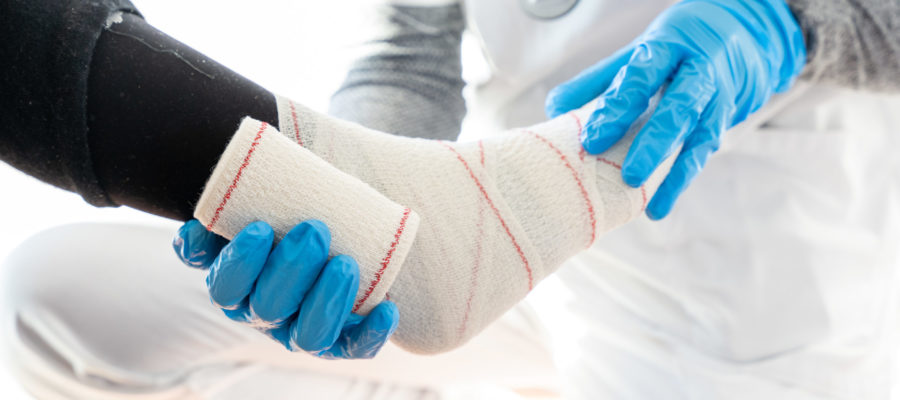Hospitals are high-risk environments for slips, trips, and falls. In fact, slips, trips, and falls are the leading cause of injuries in hospitals. There are many potential hazards in hospitals that can contribute to a hospital accident involving slips, trips, or falls, such as wet floors, cluttered floors, electrical cords, and loose rugs. However, there are many steps that hospitals can take to prevent hospital accidents. Keep reading to learn more, and if you do have an accident in a hospital, be sure to contact your insurance company!
Post warning signs.

Slips and falls are dangerous for patients in hospitals. They can often lead to serious injuries, including fractures and head injuries. In order to prevent these incidents, hospitals should post warning signs to warn patients of potential hazards. Some suggested warning signs are listed below.
- Wet floors
- Uneven surfaces
- Stairs without handrails
- Puddles of water
- Cables and cords on the ground
- Loose rugs or mats
- Objects that might cause a fall, such as boxes or furniture.
By taking these precautions, hospitals can help reduce the risk of slips, trips, and falls.
Keep pathways well-lit.
One of the leading causes of preventable hospital accidents is falling. In many cases, these accidents are due to a lack of proper lighting in hospital hallways and other pathways. To prevent these types of accidents, it is important to keep all pathways well-lit. One way to improve lighting in hospital hallways is to install LED lighting. LED lights are known for their long lifespan and energy efficiency. They can also be tuned to produce a specific spectrum of light, which is beneficial for different applications. For example, blue light is often used to improve mood and cognitive function, while red light can be used to promote wound healing.
Keep walking areas clear and free of obstacles.

One way hospitals can prevent slips, trips, and falls is by keeping walking areas clear and free of obstacles. This includes ensuring that hallways are free of clutter and removing cords and cables from walkways. When you’re in a hospital, there are a lot of things happening around you that you may not be aware of. People are walking quickly and quietly with purpose, doctors and nurses are rushing around to attend to patients, and equipment is beeping and humming. In the midst of all this activity, it’s important to be aware of your surroundings and to keep walking areas clear of obstacles.
Here are a few tips for staying safe and avoiding collisions in a hospital setting, such as in the emergency department: Keep your head up and be aware of your surroundings. Watch for people who are walking quickly and quietly, as they may not be paying attention to their surroundings. Don’t stop in the middle of a walkway. If you need to stop, move to the side of the walkway and stop there. If you’re carrying something, be aware of how it might affect your ability to walk safely. Be especially careful when walking near equipment, such as stretchers or wheelchairs. By following these tips, you can help keep the walkways in hospitals clear and safe for everyone.
Install grab rails.
Nearly 2 million people each year are treated in US hospitals for injuries related to falls, according to the Centers for Disease Control and Prevention (CDC). Many of these falls could be prevented by using grab rails or other assistive devices. Grab rails, also known as handrails, are installed along the walls of hallways and stairways to provide a place for people to hold on to as they walk or climb. They can also be used to help people get out of bed or in a wheelchair.
Overall, hospitals can prevent slips, trips, and falls in a variety of ways, as outlined above. By using a comprehensive safety program that incorporates effective prevention strategies, hospitals can create a safe environment for patients and staff.
